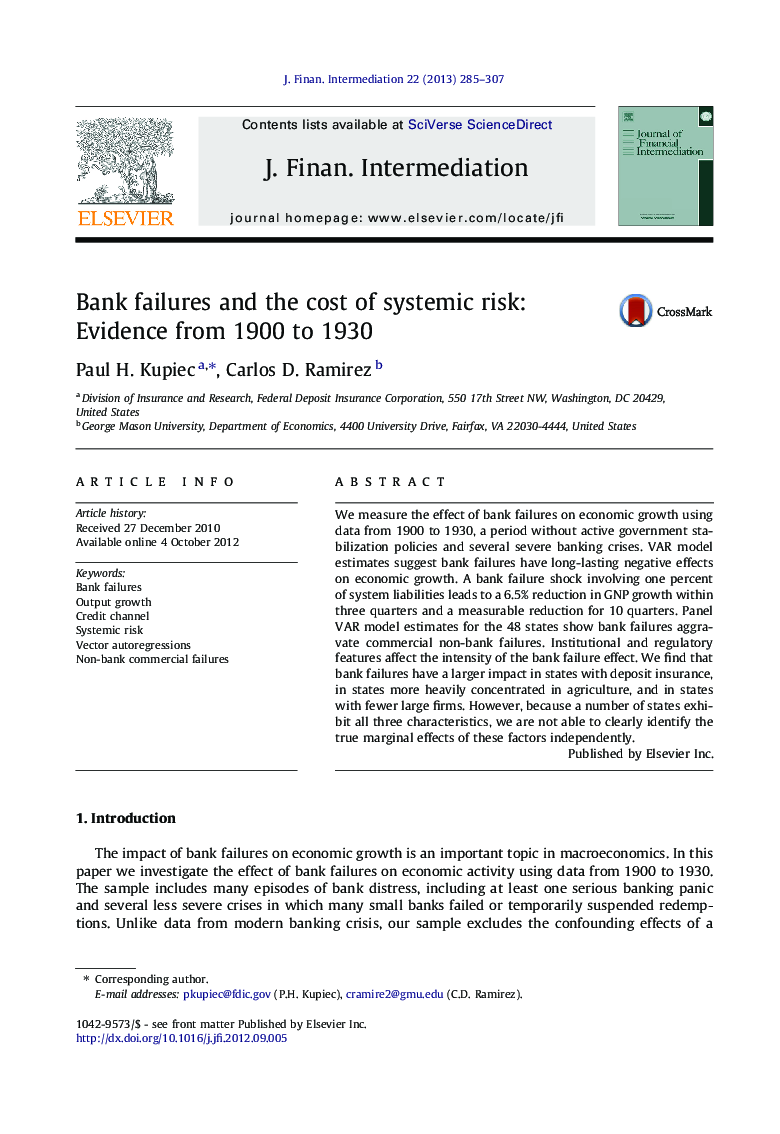| Article ID | Journal | Published Year | Pages | File Type |
|---|---|---|---|---|
| 960675 | Journal of Financial Intermediation | 2013 | 23 Pages |
We measure the effect of bank failures on economic growth using data from 1900 to 1930, a period without active government stabilization policies and several severe banking crises. VAR model estimates suggest bank failures have long-lasting negative effects on economic growth. A bank failure shock involving one percent of system liabilities leads to a 6.5% reduction in GNP growth within three quarters and a measurable reduction for 10 quarters. Panel VAR model estimates for the 48 states show bank failures aggravate commercial non-bank failures. Institutional and regulatory features affect the intensity of the bank failure effect. We find that bank failures have a larger impact in states with deposit insurance, in states more heavily concentrated in agriculture, and in states with fewer large firms. However, because a number of states exhibit all three characteristics, we are not able to clearly identify the true marginal effects of these factors independently.
